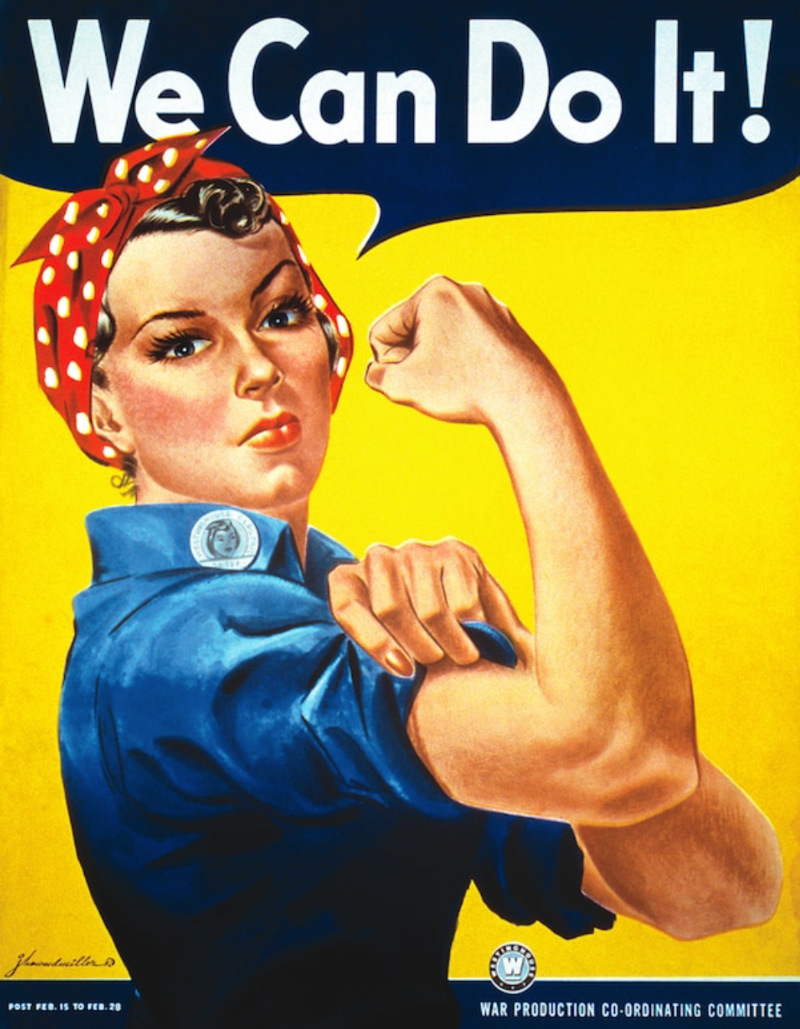Teach This Poem, though developed with a classroom in mind, can be easily adapted for remote-learning, hybrid-learning models, or in-person classes. Please see our suggestions for how to adapt this lesson for remote or blended learning. We have also noted suggestions when applicable and will continue to add to these suggestions online.

Look closely at the famous poster of “Rosie the Riveter.”
The following activities and questions are designed to help your students use their noticing skills to move through the poem and develop their thinking about its meaning with confidence, using what they’ve noticed as evidence for their interpretations. Read more about the framework upon which these activities are based.
- Warm-up: (think-pair-share) What is beauty? Join with a classmate or small group and discuss how beauty is important today.
- Before Reading the Poem: Look closely at the famous poster of “Rosie the Riveter.” (Teachers, if necessary, your students might need more context here.) What stands out to you in this poster? Why? What might this poster be advertising? Who might be the audience for this poster? Why?
- Reading the Poem: Silently read the poem “Girls On the Town, 1946” by Rita Dove. What do you notice about the poem? Note any words or phrases that stand out to you or any questions you might have.
- Listening to the Poem (enlist two volunteers to read the poem aloud): Listen as the poem is read aloud twice, and write down any additional words and phrases that stand out to you.
- Small-group Discussion: Share what you noticed about the poem with a small group of students. Based on this poem and the resources from the beginning of class, how does the person in the first stanza feel about beauty? How does this compare to what you shared about beauty at the beginning of class? What “currency” does beauty hold today?
- Whole-class Discussion: How does the second stanza compare to the first? How might the image of “Rosie the Riveter,” which you viewed at the beginning of class, play in the poem?
- Extension for Grades 7-8: In honor of Women’s History Month, continue reading more women poets here. Choose a poet to read and explore. With your teacher and classmates, create a special day to share your poems and present what you learned about your selected poet.
- Extension for Grades 9-12: In honor of Women’s History Month, continue reading more women poets here. Choose one or more poets to read. Then, write your own poem that honors Women’s History Month and a woman who is meaningful to you. With your class, create an anthology of these poems.
“‘Rosie the Riveter’ was an iconic poster of a female factory worker flexing her muscle, exhorting other women to join the World War II effort with the declaration that ‘We Can Do It!’ Mae Krier, 93, an original Rosie the Riveter, worked at Boeing aircraft, producing B-17s and B-29s for the war effort from 1943 to 1945 in Seattle. She is advocating Congress for getting March 21 recognized annually as a Rosie the Riveter Day of Remembrance. Saying she wants to inspire a ‘We Can Do It!’ attitude among young girls everywhere, she also is advocating that Congress award the Rosies the Congressional Gold Medal for their service.” Read more.
